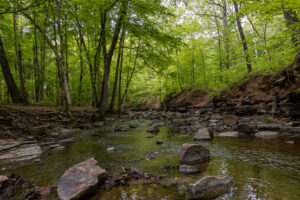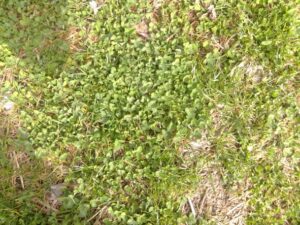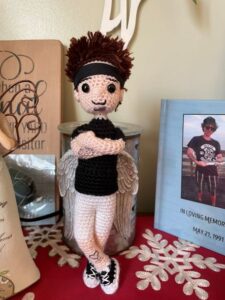By Robin Mayes, Farm Educator
When I was a kid growing up on a Delaware County farm, my Dad had a dairy herd. (I loved those cows … and especially their little calves!) Our big red barn was the heart of farm activities. One side had stanchions where the cows lined up to be milked. There were always barn cats hanging around, hoping for some spilled milk to lap up. In a small room at the front of the barn stood the big milk cooler. It was a square metal tank full of cold water. Once they were filled, the heavy, two-handled milk cans would sit in the water until the “milk truck” came to pick them up. In summer, one of my favorite treats would also be found floating in the water of that big vat … watermelon! After the warm sun had grown those seeds into large juicy melons, the cold water would cool them quickly for a refreshing treat. In addition to the dairy operation, the big red barn housed a few pigs, a couple of steer for beef and the love of my young life, our pony, Brown Sugar.
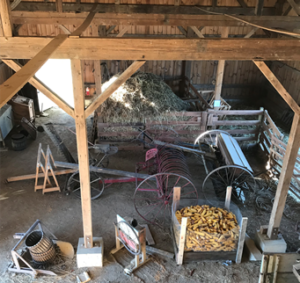
The area of the barn that brought the most joy to me and one of my sisters, though, had to be the hay loft. By my childhood, baled hay and straw was the norm on American farms rather than piles of loose hay. The hay cradle still hung from the track that ran the length of the barn, but now Dad found it more efficient to use a motorized “elevator” to carry the bales to the second floor of the barn. At the beginning of winter, the hay loft was out of bounds for us. The bales were stacked to the rafters and there was not much room to play and Mom thought the threat of a hay avalanche was too great. Once the store of hay and bedding diminished, however, there was room to play. The bales could be moved around and stacked into cozy rooms, hideouts and even mazes. We would spend hours playing up there! In midsummer, when the hay stores were running low and most of the smooth plank flooring of the loft was revealed, the loft became the perfect setting for a barn dance. I miss the earthy smells of the hay mingled with the woodsy barn timbers and the musky livestock aroma.
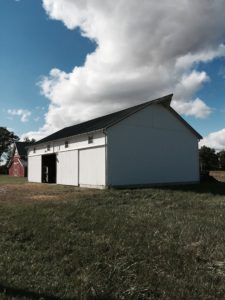
The big white barn at Gallant Farm has its own unique history. The “bones” or beams of the barn were first used as part of a building at the 1893 Columbian Exposition. Following that historic Chicago World’s Fair, some of the buildings were dismantled and the materials were apparently dispersed. Some of the lumber lived on as a barn at the stockyards near the railroad in Radnor here in Delaware County. Decades later, the barn was purchased and moved to the Powell area; and eventually, the Columbus Zoo obtained the property on which the barn stood. When the zoo wanted to use the area for a new exhibit, the barn was removed and part of it was rebuilt at Gallant Farm. The interior of the barn has been a big, open space, until this last year. Stalls for our three Tunis sheep have been constructed and the finishing touches are being put on a hefty new hay loft. Massive oak beams have been milled to bolster the strength of the structure and ensure that the loft can hold plenty of hay. Mortise and tenon joints were cut to marry the horizontal rafters to the upright beams. Wide planks were milled for the loft platform.
We are anxious to have the loft filled with aromatic hay! The trolley that hangs from the metal track that runs the length of the barn up in the peak of the roof combined with the fork-like hay cradle will make moving the hay up into the loft a breeze!
Come visit Gallant Farm and experience the sights, sounds, and aromas the big barn offers throughout the year. For me, and maybe you too, it is a walk down memory lane!




